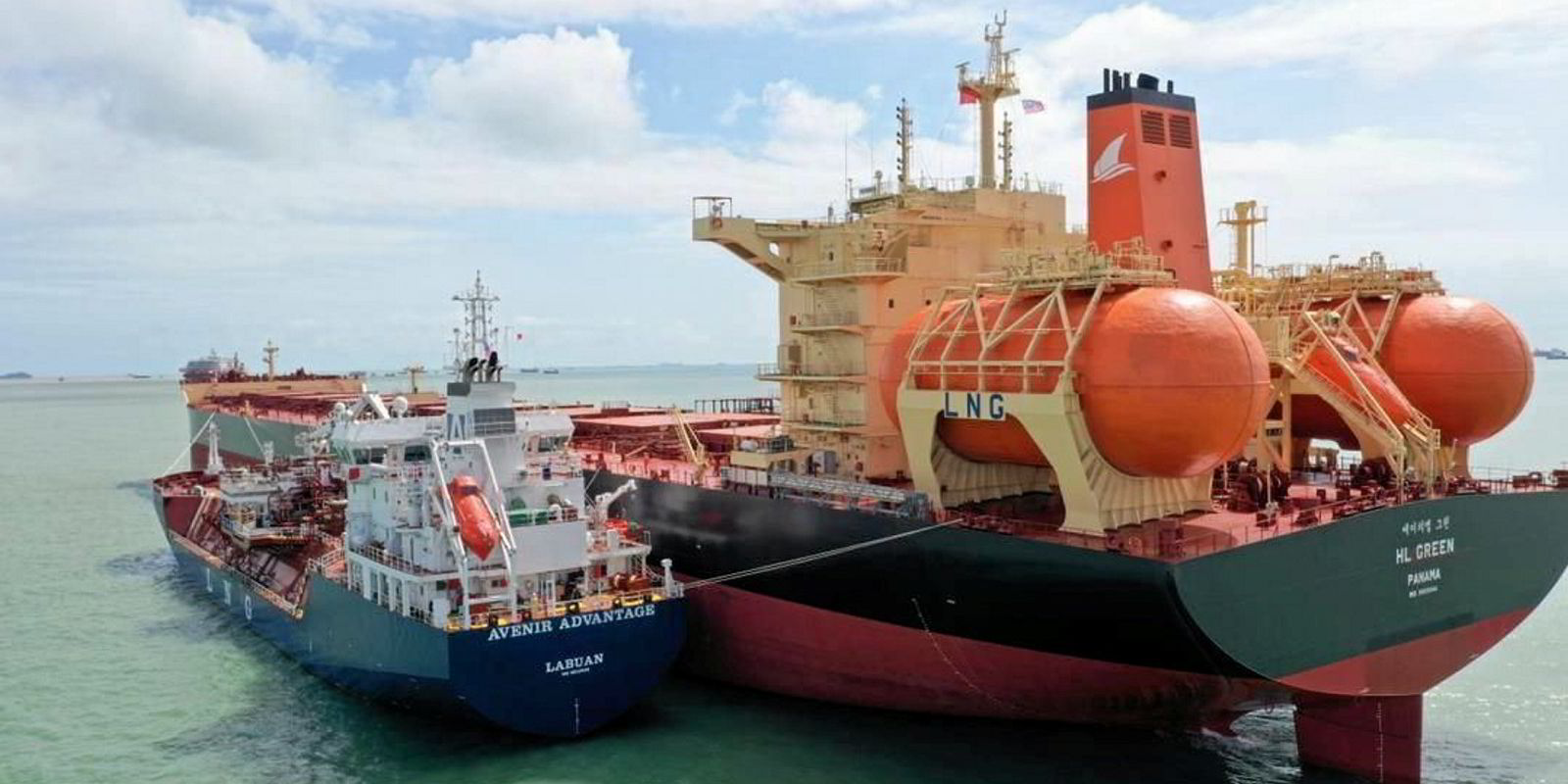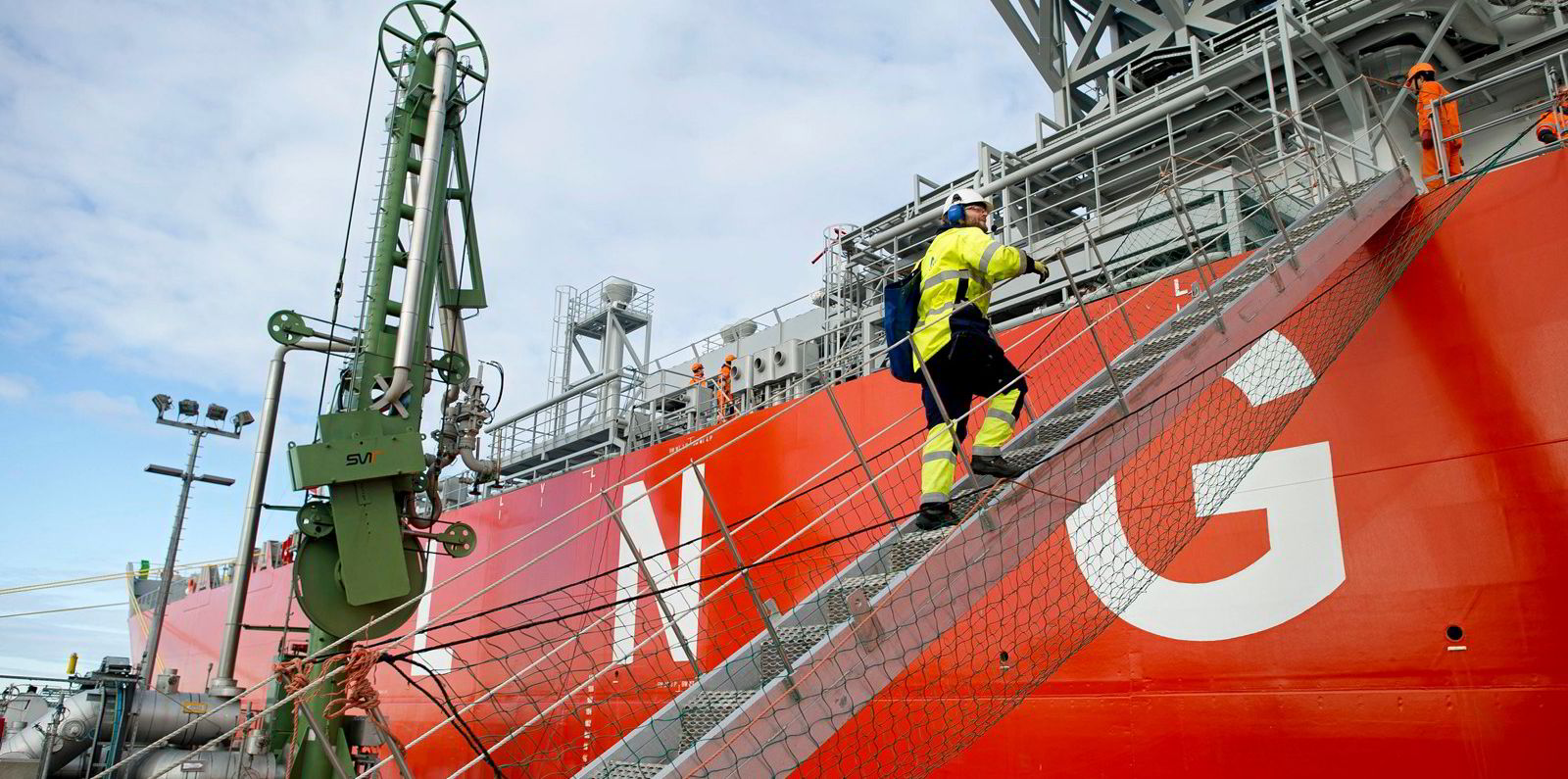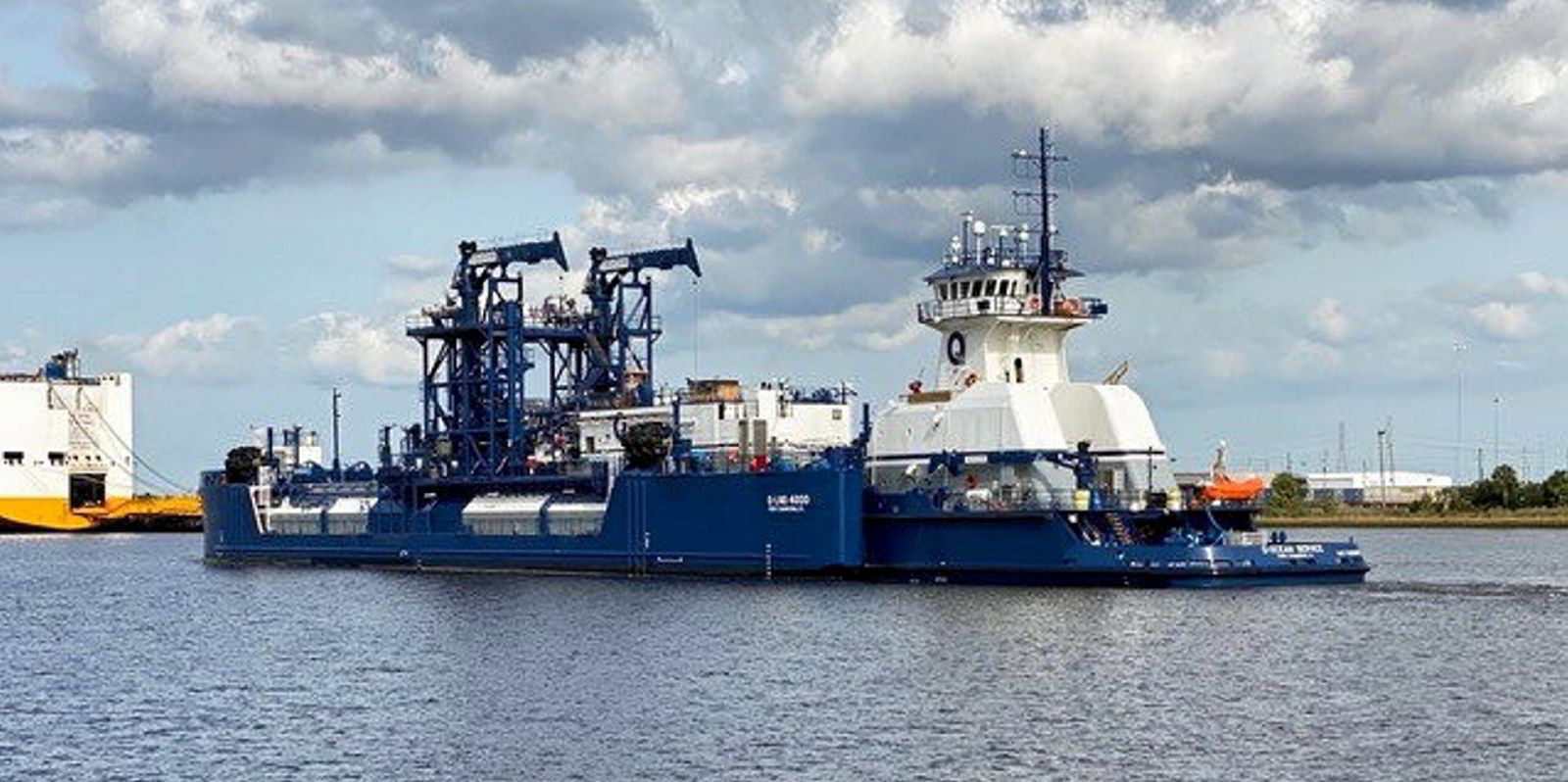Interest in LNG bunker vessel (LNGBV) newbuildings is rising on the back of increased enquiries from potential charterers, as more LNG-fuelled vessel projects progress towards firm orders.
Data from the Society for Gas as a Marine Fuel (SGMF) shows there are 21 LNGBVs in operation and a similar number on order, with 14 scheduled to go into operation this year.
SGMF lists projects for at least 18 vessels as “under discussion”, although brokers hint that there are more in the works.
In a new report, shipping industry coalition SEA-LNG said LNG-fuelled vessels total about 13% of the current newbuilding orderbook.
SEA-LNG cited statistics from shipbroker Clarksons that lists 124 ports as offering LNG-bunkering facilities, with a projection that this will increase to 170 by 2022.
Clarksons also projects the LNG-bunkering fleet will double in size in the next two years, the group said.
- LNG bunker vessels in operation: 21
- LNG bunker vessels on order: 20
- Projects for LNG vessels under discussion: 18
- LNG-fuelled ships in operation: 193
- LNG-fuelled ships on order: 238
Source: SGMF
Pricing
Brokers working on LNG bunker newbuilding projects caution that the pricing for the niche vessels is not falling.
Instead, they said companies are trying to reduce specifications on small-scale ships that would limit them to functioning as pure bunkering units, rather than doubling up as trading vessels, in an effort to reduce costs.
Multi-year charters are required to back investment in these newbuildings if this sector is to develop, one broker said.
While the energy majors, particularly Shell and Total, have taken the lead in developing LNG bunkering infrastructure worldwide, brokers now speak about a raft of new enquiries from global players.
One broker cited three potential clients for LNGBVs in North America, with two each in Asia and the Mediterranean and another in the Middle East.
Total and Shell are believed to need more vessels to fill gaps in their global supply ambitions.
In December, Shell, which at the time had six LNGBVs in operation, said it expects to more than double the number of vessels it will be using by 2025.
An unnamed Japanese entity is also flagged up as a likely new entrant.
North-west Europe is considered “quite well covered” by some players in this sector. But more, particularly smaller capacity vessels, are expected to be slotted into the mix here.







